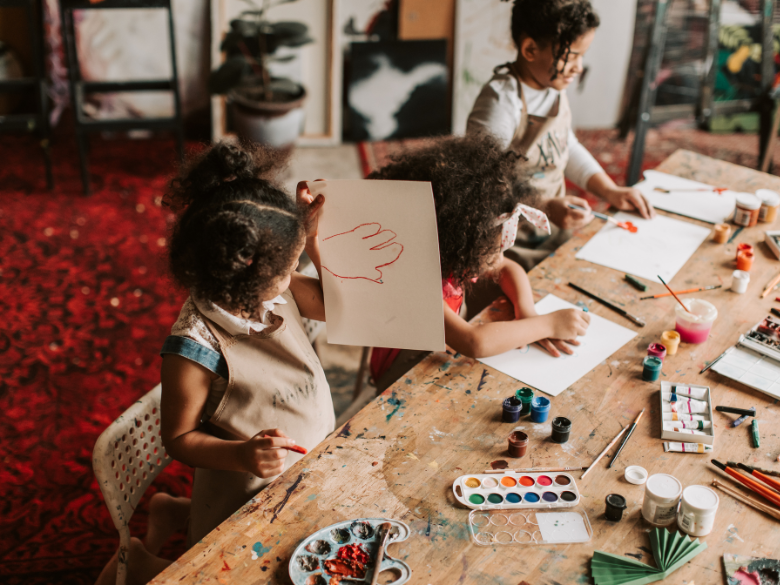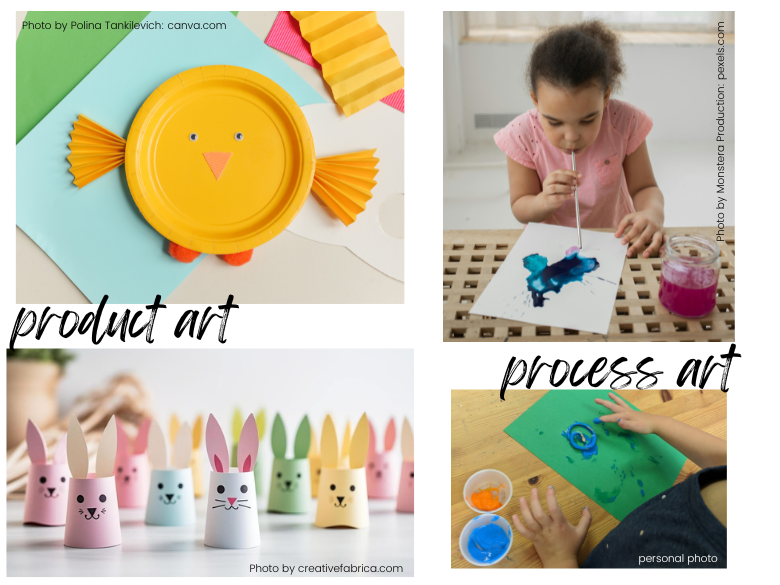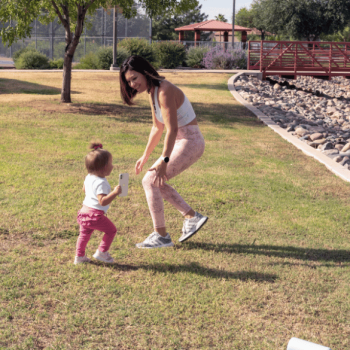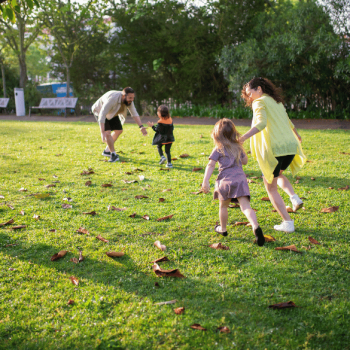
Children love art. Art is a powerful way to share stories, thoughts, and feelings. It is a way for children to express those things they are learning and thinking about regarding the Bible and God. And, it can be a powerful tool for kids to reflect on their own faith. But, what are the best kinds of Bible art activities for kids and their faith?
Series Helping Your Kids Own Their Faith
This is week 6 of a series on equipping you to help your child to own their faith. We have already talked about:
- The Jesus Kids Want to Know
- The Benefits of Choice
- Play to Help Your Child Grow Spiritually
- Telling Engaging Bible Stories
- Asking Kids Questions
(This may contain some affiliate links, which means I receive a small commission, at no extra cost to you, if you make a purchase using these links. For more information, please see my disclosure policy.)
Created In the Image of the Creator
“So God created human beings[d] in his own image.
In the image of God he created them;
male and female he created them.” Genesis 1:27 NLT
We know children are created in the image of our Creator God. Children reflect God’s creativity more than adults. According to one study, 98% of children could pass a creativity text that only 2% of adults could pass.
What happens as children grow? Are we squashing their God-given creativity in traditional discipleship with traditional Bible art activities for kids? Or, are we providing a creative avenue for children to experiment and express their faith?
According to the study, traditional education seems to be a major culprit of children outgrowing their creativity. But, from my experience the typical Bible crafts are not helping either.
My children do go to public schools and, while I advocate for Christian families to use whatever schooling method they feel called to, I don’t we can ignore the research that cookie cutter expectations of children are hurting their creativity.
As Chritian parents we can help! We can allow our children to practice creativity at home and cultivate it as a part of their design and identity.
Are Bible Art Activities for Kids Play?
Science and personal experience shows that God designed kids to learn through play. Play changes our brains, bodies, bonds, and bliss. It is a way that we experience and model the abundant life with Christ and the joy of being in God’s presence. Play is vital for our faith.
In previous articles on choice and play, I talked about self-chosen being one of the criteria for play. So, art can be play, but often the way we use it with Bible stories is more entertainment than true play. Thus, Bible crafts with specific end goals are not play and do not offer all of the benefits of play.
Process Art versus Product Art
“ Process-based art sparks imagination and encourages children to think outside the box. They can transform everyday materials into something extraordinary and use their art to tell stories or convey their thoughts and emotions.” Kristen RB Peterson
So, how do you know if Bible art activities are play and helpful for a child to express and own their faith or not?
Here are a few questions you can ask:
- Is it self-chosen or adult-chosen?
- Does it provide space for a child to express themselves and their creativity?
- Am I focused on the process of creating the art or the product that is being created?
- Am I telling the child what to do, to think, and what it means?
A majority of the time, process art will yield a better opportunity for children to reflect on Scripture, their faith, and how it relates to them leading to more ownership of their choices and faith. Product art will lead to children’s creativity being stifled and less relevance and ownership of a story.
What are product art and process art?
What exactly are process art and product art?
- Process Art – art that is focused on the process; child-directed; there is no right or wrong way of doing it; each child’s work will be unique; may not be wall-worthy because it was not about the final product.
- Product Art – crafts that have a specific end-product in mind; adult-directed; has step-by-step directions to follow; each child’s work will look similar at the end; not focused on creativity, but on doing specifics skills in a specific order.

Some children may enjoy craft kits and coloring pages, but to always use these limits a child’s creativity and, I believe, a children’s opportunity to listen to the Holy Spirit during artistic reflection and processing.
When we allow children to reflect on a story through their own artistic choices, rather than telling them to color 2 fish and 5 loaves, they are making their own meaning of the story and personalizing it. This builds a child’s connection and allows the story to become relatable to them. This builds meaning and retention.
Though not impossible, guiding children step by step through a specific crafts, limits the ability for the children to listen to the Holy Spirit.Trusting children with creativity and art also speaks confidence and capability into a child to understand and give meaning to a Bible story through personal communication with the Holy Spirit.
Extra Bible Art Activities for Kids Resources
If you are looking for a book on some simple process art ideas, Wonder Art Workshop is written by one of my favorite teachers on the subject. Though it is not a faith-based book, the ideas in the book may spark your own creativity.
Additionally, I offer a monthly Purposeful Play printables membership that offers process art ideas and play invitations tied to Bible stories.
Prayer Through Art
Another artistic option that I have enjoyed with children, is the book Praying in Color Kids Edition. The adult version is wonderful and easily adaptable for kids, as well.
This allows kids to doodle and talk to God at the same time. There are directions to introduce you to the concepts, but then there is plenty of freedom to allow for creativity and holy listening to the Spirit.
Final Thoughts on Bible Art Activities for Kids
Many kids love art! Many adults do, too. This is because we are made in the image of an incredibly creative God. When we practice our creativity we can, not only reflect him, but connect with him through it.
I invite you to prayerfully consider how you use art as a discipleship tool. It is has so much potential when used well, but can also add to the boredom and prevent children from owning their faith when not done intentionally with children’s development in mind.














